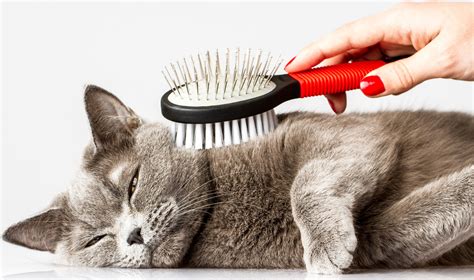As a cat owner, ensuring the well-being of your feline companion is paramount. Regular grooming is not just about aesthetics; it’s vital for your cat’s overall health and happiness. This comprehensive guide will delve into every aspect of cat grooming, from coat care to health considerations, empowering you to provide the best possible care for your furry friend.

1. Understanding Your Cat’s Coat Type
Cats have various coat types, each with unique grooming requirements. Knowing your cat’s coat type is essential for tailored grooming practices.
| Coat Type | Characteristics | Grooming Frequency |
|---|---|---|
| Short-haired | Smooth, dense; minimal shedding | Weekly brushing |
| Medium-haired | Moderate length; seasonal shedding | Daily brushing |
| Long-haired | Long, silky; abundant shedding | Daily to twice-daily brushing |
| Double-coated | Dense undercoat; seasonal shedding | Daily brushing during shedding periods |
| Rex | Wavy or curly; minimal shedding | Weekly brushing |
| Sphynx | Hairless; requires special care | Regular baths and moisturizing |
2. Essential Grooming Tools
Equipped with the right tools, grooming becomes a breeze. Here’s a checklist of must-haves:
- Brush: Choose a brush specific to your cat’s coat type, such as a slicker brush for long-haired cats or a rubber brush for short-haired cats.
- Comb: A fine-toothed comb helps remove tangles and mats.
- Nail clippers: Regular nail trims prevent overgrowth and discomfort.
- Ear cleaner: Ear infections are common in cats; use a veterinarian-approved ear cleaner to clean their ears regularly.
- Toothbrush and toothpaste: Dental hygiene is crucial for feline health; brush your cat’s teeth weekly using pet-specific toothpaste.
- Grooming wipes: Convenient for quick touch-ups or cleaning sensitive areas.
3. Effective Grooming Techniques
Brushing:
- Brush your cat regularly to remove loose fur, prevent mats, and distribute natural oils.
- Start from the head and work your way down the body, brushing in the direction of hair growth.
- Be gentle, especially around sensitive areas like the belly.
Combing:
- Use a comb to remove tangles and mats.
- Hold the fur at the base and gently work through the tangle, starting from the ends and gradually moving towards the roots.
Nail Trimming:
- Hold your cat firmly and use sharp nail clippers to trim the tips of their nails.
- Avoid cutting too short; you can inadvertently hit the nail quick, which is painful for the cat.
Ear Cleaning:
- Saturate a cotton ball with ear cleaner and gently wipe the outer ear.
- Do not insert cotton swabs into the ear canal; this can cause damage.
Toothbrushing:
- Brush your cat’s teeth regularly using pet-specific toothpaste.
- Lift their lips and gently brush the teeth in small circular motions.
4. Health Considerations
Regular grooming provides an opportunity to closely examine your cat for potential health concerns.
Skin Conditions:
- Rashes, scabs, or excessive shedding can indicate skin allergies, parasites, or infections.
- Consult a veterinarian if you notice any changes in your cat’s skin.
Dental Health:
- Bad breath, yellowed teeth, or bleeding gums are signs of dental disease.
- Regular brushing and veterinary check-ups are crucial for maintaining good oral hygiene.
Nail Overgrowth:
- Overgrown nails can cause discomfort and mobility issues.
- Trim your cat’s nails regularly to keep them at an optimal length.
5. Common Mistakes to Avoid
- Over-brushing: Excessive brushing can damage your cat’s coat and skin.
- Bathing too frequently: Cats are natural self-groomers; bathing them more than once or twice a month can strip their natural oils.
- Using human grooming products: Human shampoos and conditioners are not suitable for cats; they can irritate their skin.
- Ignoring dental hygiene: Dental neglect can lead to painful toothaches and serious health problems.
- Forcing grooming: If your cat resists grooming, be patient and consult a veterinarian for guidance.
6. Future Trends and Innovation
The pet grooming industry is constantly evolving, with innovative products and techniques emerging.
- Biodegradable grooming products: Consumers are increasingly seeking eco-friendly grooming options for their pets.
- Personalized grooming subscription boxes: These boxes deliver customized grooming products tailored to your cat’s specific needs.
- Advanced nail grinders: Nail grinders offer a more precise and gentle way to trim your cat’s nails.
7. Conclusion
Regular grooming is a fundamental aspect of your cat’s well-being. By following the guidelines outlined in this comprehensive guide, you can provide your furry friend with the best possible care. Remember, your veterinarian is always a valuable resource for personalized advice and guidance. Embrace the joy of grooming and witness the positive impact it has on your cat’s health, happiness, and bond with you.





















